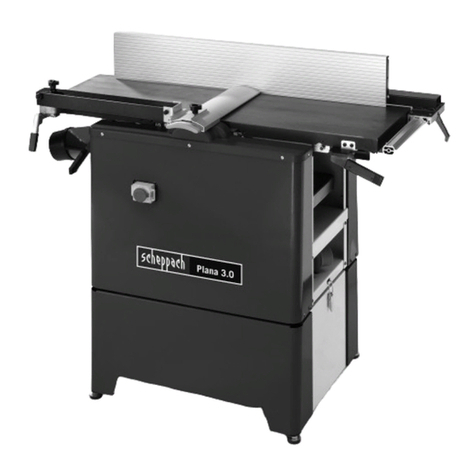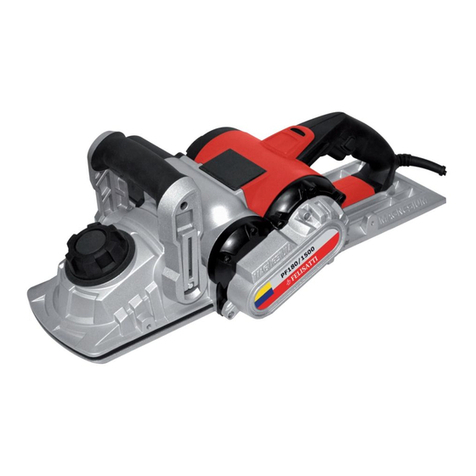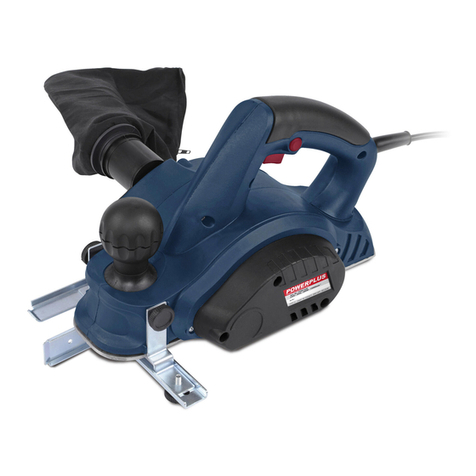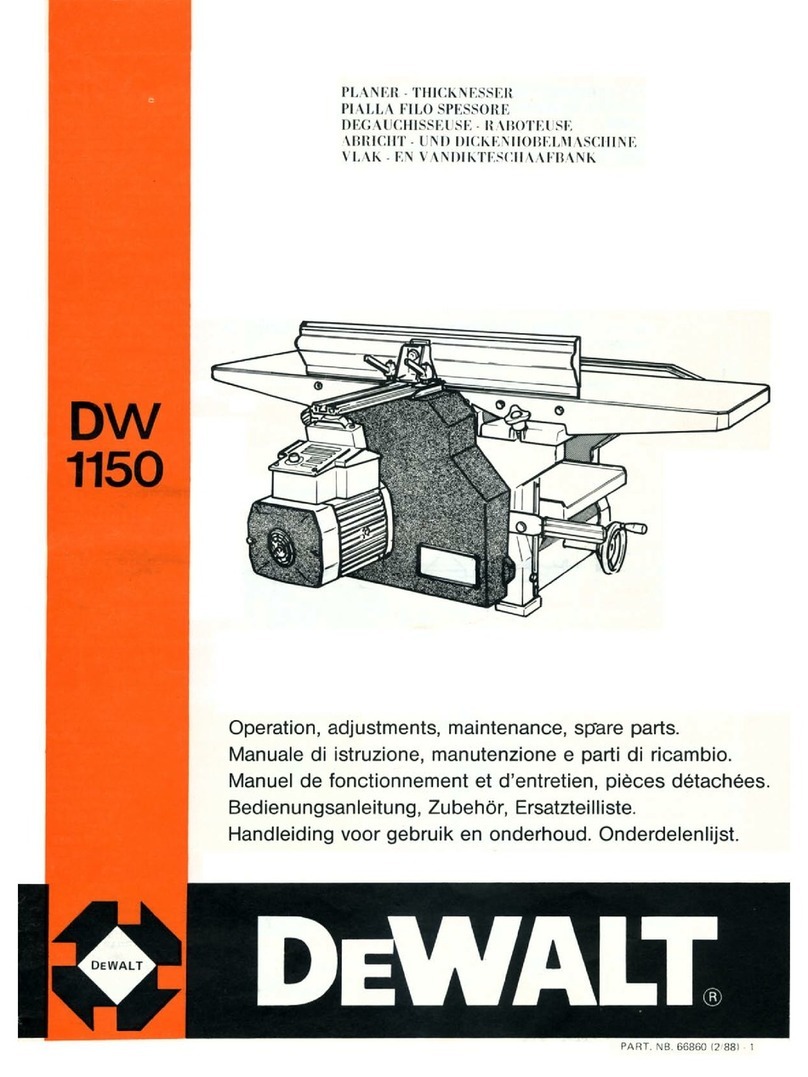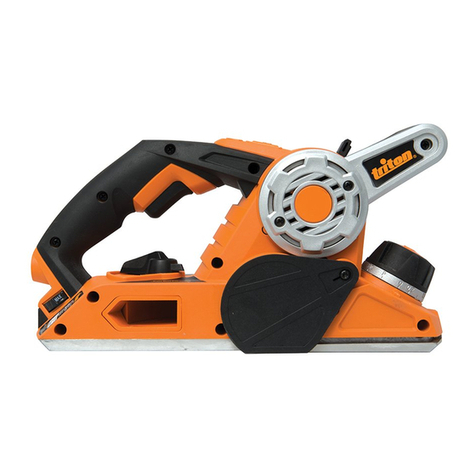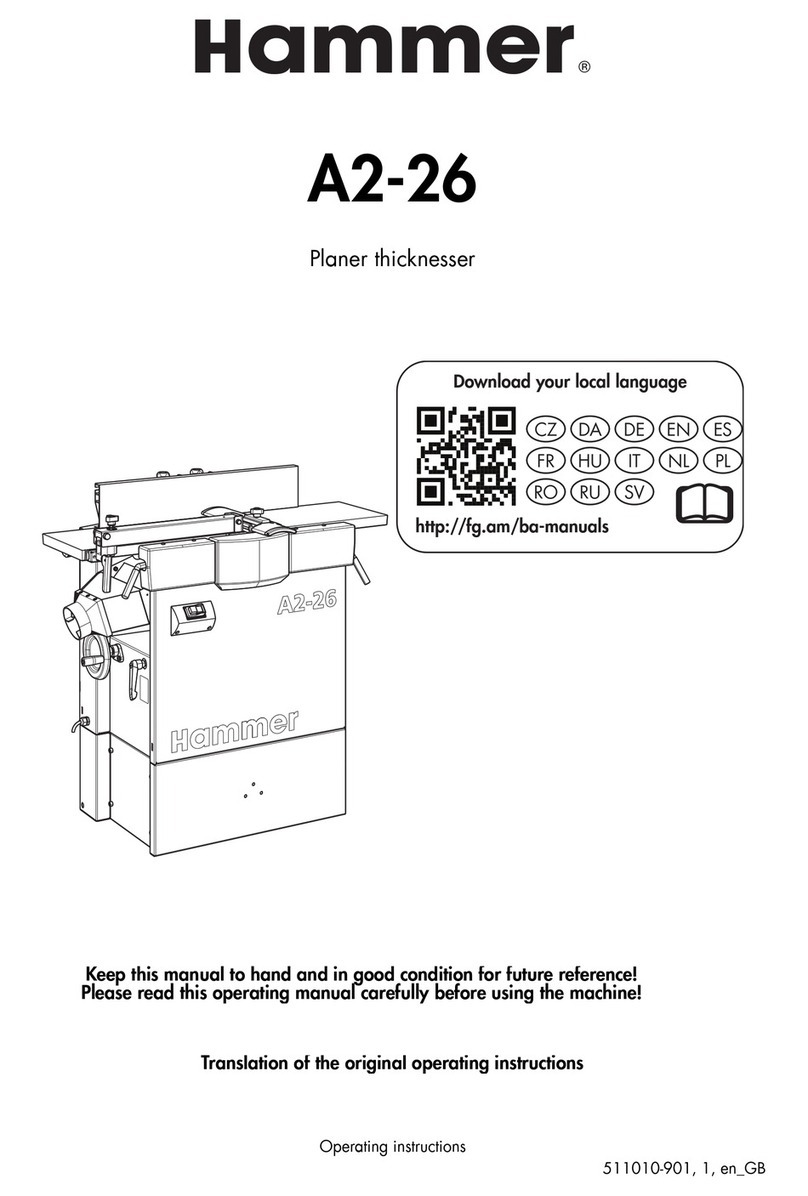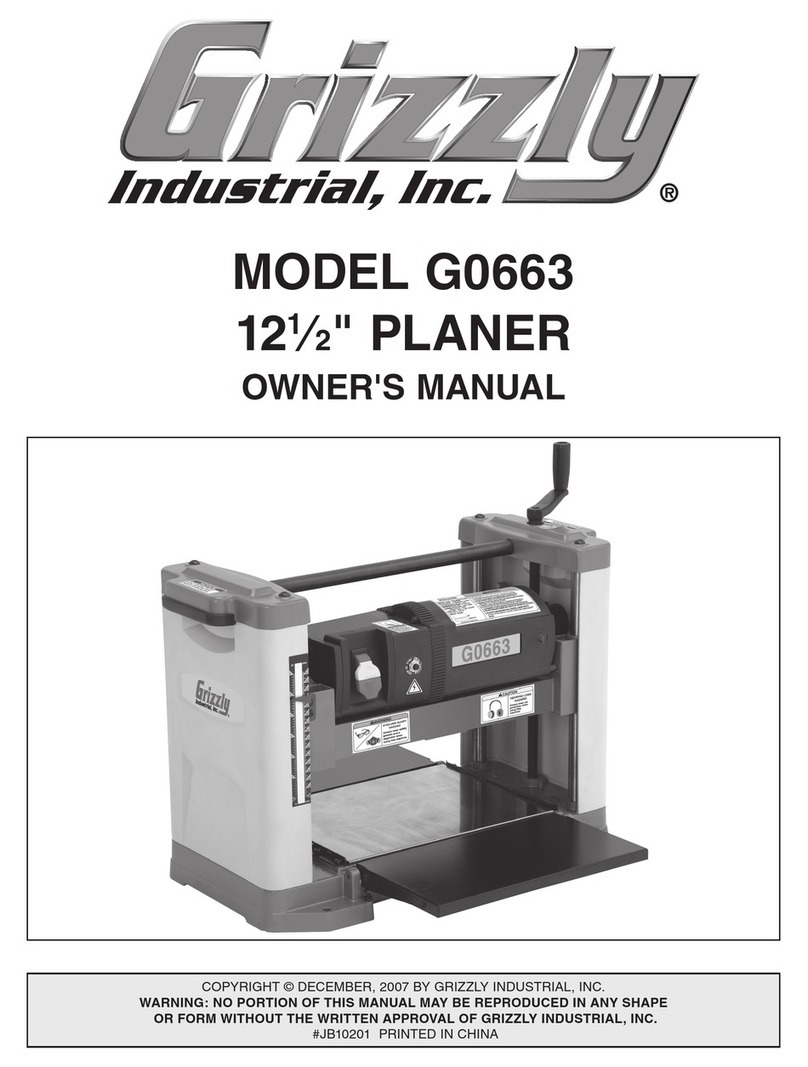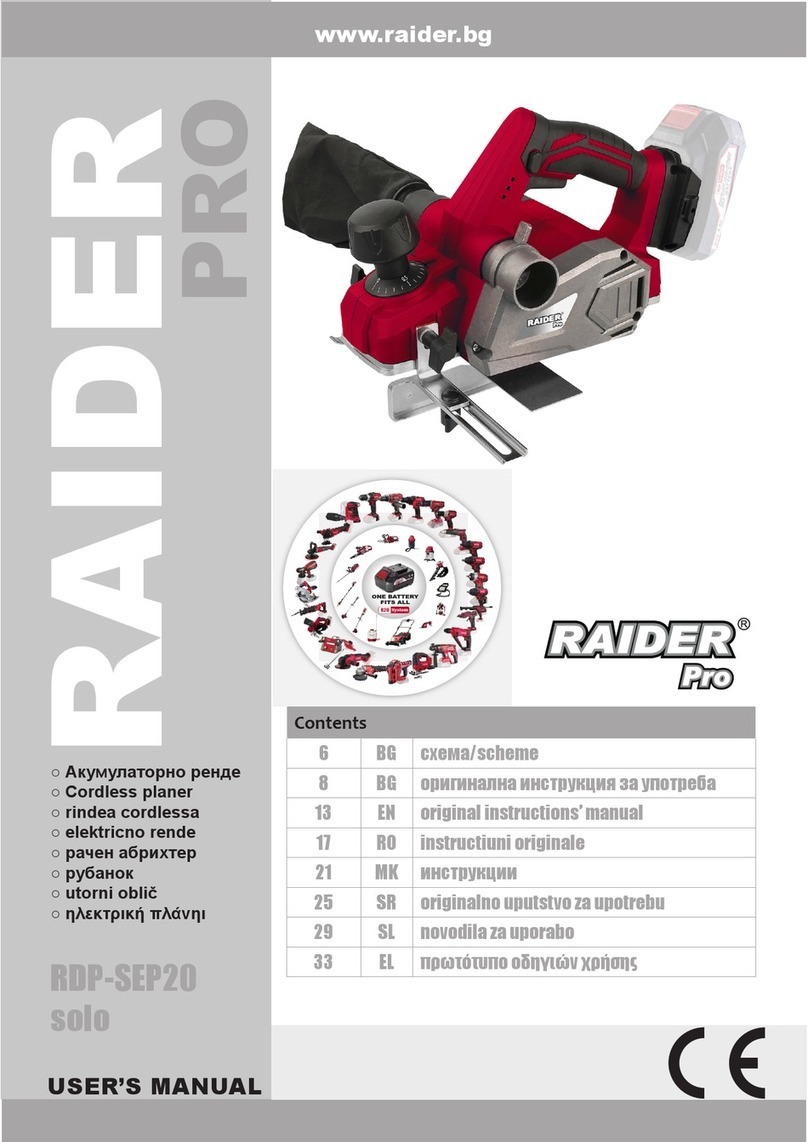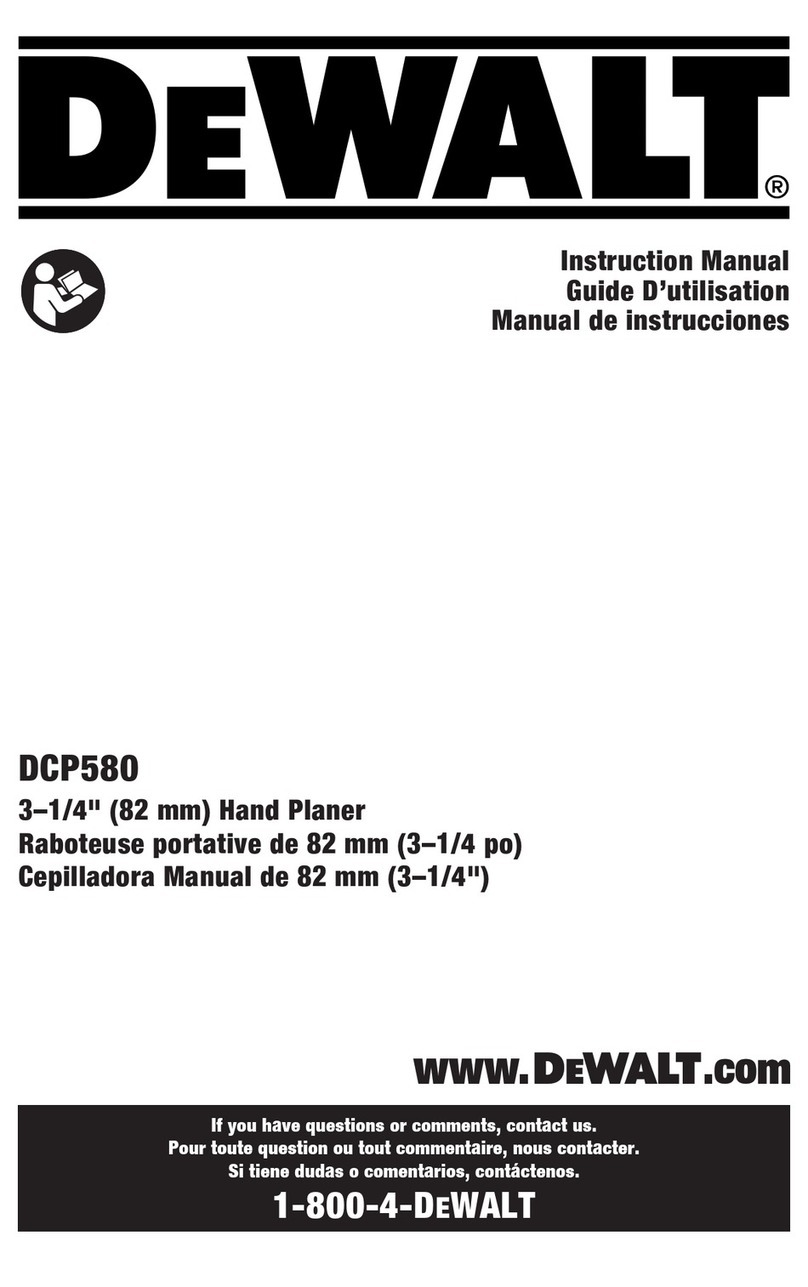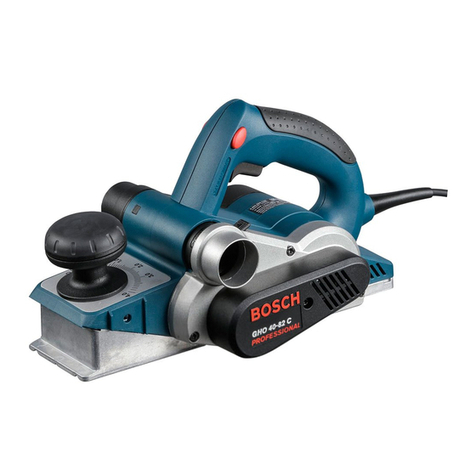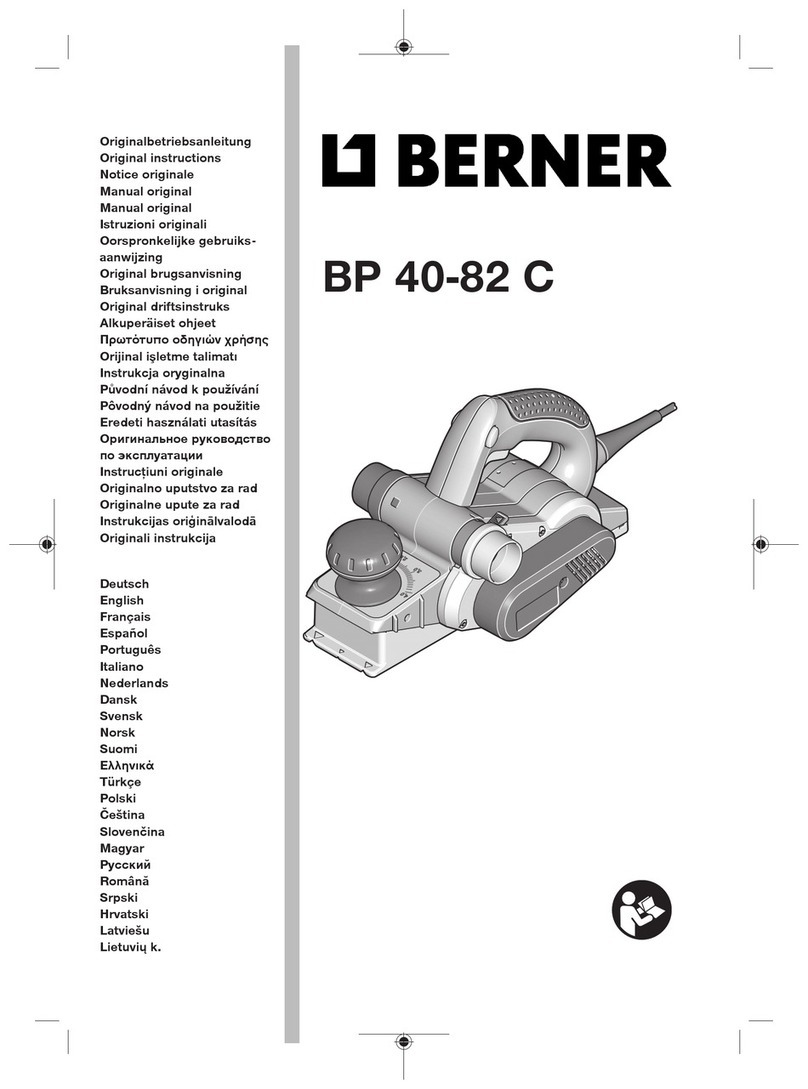
ENGLISH
4
e) When operating apower tool outdoors, use anextension cord suitable for
outdoor use. Use of acord suitable for outdoor use reduces therisk of electric shock.
f) If operating apower tool in adamp location is unavoidable, use aresidual current
device (RCD) protected supply. Use of anRCD reduces therisk of electric shock.
3) Personal safety
a) Stay alert, watch what you are doing and use common sense when operating
apower tool. Do not use apower tool while you are tired or under theinfluence
of drugs, alcohol or medication. Amoment of inattention while operating power
tools may result in serious personal injury.
b) Use personal protective equipment. Always wear eye protection.
Protective equipment such as dust mask, non-skid safety shoes, hard hat,
or hearing protection used for appropriate conditions will reduce personal injuries.
c) Prevent unintentional starting. Ensure theswitch is in theoff-position before
connecting to power source and/or battery pack, picking up or carrying
thetool. Carrying power tools with your finger on theswitch or energising power
tools that have theswitch on invites accidents.
d) Remove any adjusting key or wrench before turning thepower tool on.
Awrench or akey left attached to arotating part of thepower tool may result in
personal injury.
e) Do not overreach. Keep proper footing and balance at all times. This enables
better control of thepower tool in unexpected situations.
f) Dress properly. Do not wear loose clothing or jewellery. Keep your hair, clothing
and gloves away from moving parts. Loose clothes, jewellery or long hair can be
caught in moving parts.
g) If devices are provided for theconnection of dust extraction and collection
facilities, ensure these are connected and properly used. Use of dust collection
can reduce dust-related hazards.
4) Power tool use and care
a) Do not force thepower tool. Use thecorrect power tool for your application.
Thecorrect power tool will do thejob better and safer at therate for which it was
designed.
b) Do not use thepower tool if theswitch does not turn it on and off. Any power
tool that cannot be controlled with theswitch is dangerous and must be repaired.
c) Disconnect theplug from thepower source and/or thebattery pack from
thepower tool before making any adjustments, changing accessories, or
storing power tools. Such preventive safety measures reduce therisk of starting
thepower tool accidentally.
d) Store idle power tools out of thereach of children and do not allow persons
unfamiliar with thepower tool or these instructions to operate thepower tool.
Power tools are dangerous in thehands of untrained users.
